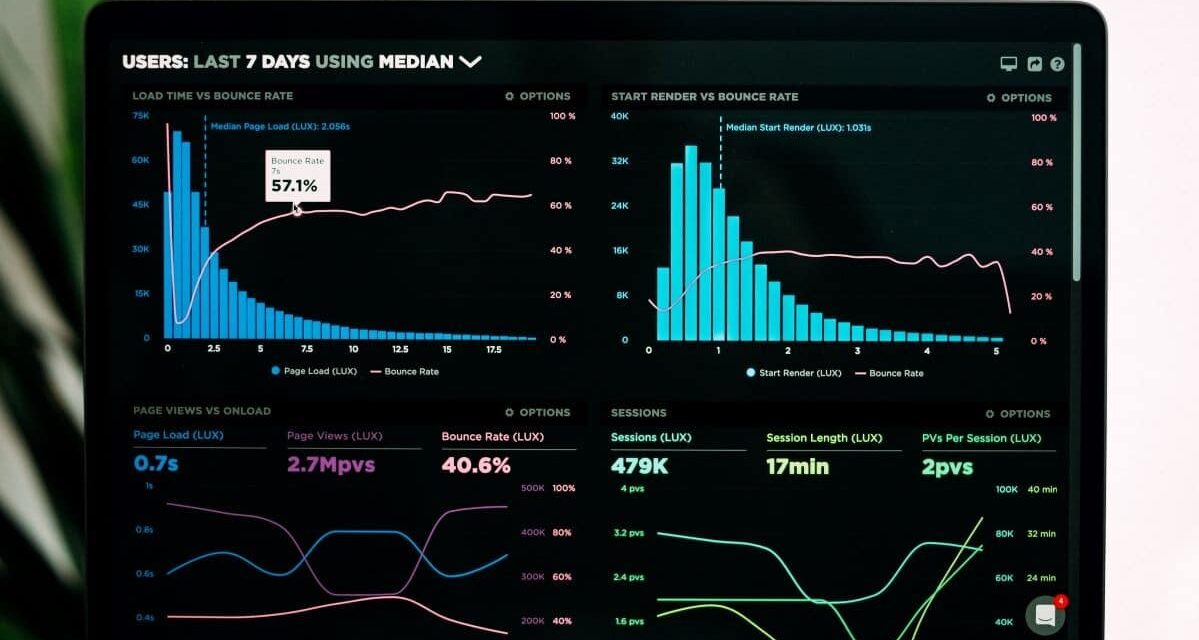The process of designing a website is often considered an art, and intuition is generally the way to follow. Unfortunately, designers cannot read in the minds of users. This is where Data-Driven Design (or design controlled by data) can be useful. This approach to Data-Driven Design allows you to create a user-centered design and a better global user experience. However, there is still a lot of confusion on this subject and a lack of global understanding of its importance. To help you, we have prepared this article to explain to you what Data-Driven Design is exactly and in which it is essential.
What is Data-Driven Design?
Data-Driven Design is the way of design something in relying on data. This is a development or improvement process based on elements that can be measured. Designers who ignore the data and only rely on their instinct may waste time and money by creating ineffective solutions. Many designers suffer from the effect of false consensus: they project their behavior and their reactions on users and make decisions according to their own thoughts and experiences.
If all designers have hypotheses and assumptions On solutions Who will work For their users, Each hypothesis must be validated. The data can say a lot about user behavior: their preferences, what they like or do not like, the way they interact with digital products and devices they use etc. This is why it is essential to use them.
Why is Data-Drive Design so important?
Even the best designers in the world cannot predict exactly what users want; We are rarely (if never) the target audience. Learn what makes your users tick and ensure that Your product meets their needs is essential for its success. The collection and use of data allows us to make informed decisions on the entire design process. When you understand the needs, wishes and desires of your users, you go beyond your assumptions and understand how to create a product that works, really!
Start the Data-Drive Design process
We explained what Data-Driven Design is and why it is essential in the world today. However, we have not yet discussed the subject of the start of this data-Drive design process.
Ensure access to data
Above all, Key persons must have access to data So that this process works. In large companies, the flow of information between services is often limited. However, this can constitute a real obstacle to the implementation of this new process.
The idea that Data Specialists take care of quantitative data, while UX designers take care of the user experience, is exceeded. Little by little, these borders fade. Designers must also have access to quantitative data, especially those that characterize the user behavior. Of course, they need this data to be represented in an understandable way, and not only in the form of raw data. Discuss with your team and decide how you will share this information within your business, between the different stakeholders. Think about who should know what, how you will structure the entire process and what tools you will use. Make sure that acquisition of all information necessary either As easy as possible, for everyone.
Set clear and realistic objectives
Before you start collecting data, you need to know what you want to do. It is necessary to define your objectives as clearly as possible To effectively implement this data centered approach.
Do you want to create a completely new product or simply modify an existing product and create a new iteration? The data collection process will be different in these two scenarios. Make sure also Your goals are realistic. In addition to data, other important factors must influence your decisions, such as cost, time and feasibility.
You can Take these variables into account And ask yourself if a redesign is a practical choice in this specific situation? Sometimes it is better to simply change the existing product.
Create one or more hypotheses
Once you know why you collect the data, you can focus on creating a hypothesis. The hypotheses are used in scientific experiences, but the same principles apply in UX. Do not confuse a hypothesis with a theory. A hypothesis is more like a predictive assumptionwhile a theory is a set of knowledge supported by data that explains phenomena.
Here is an example of a hypothesis of a UX experience:
“If the contrasting elements draw attention, then giving the CTA a contrasting color with its background will increase conversions, because it will be more noticed by visitors to our page. »»
A hypothesis like this would be an excellent starting point for a UX experience. You could perform an A/B test on several models, one with a very contrasting CTA button and the other with a less contrasting CTA. The figures will show you in which direction to go.
Choosing a Data-Driven Design strategy
Since you have the guidelines to create a hypothesis, the question is: how to choose what you are going to test? Where to start?
Testing anything that can be is not a good idea. There is a good chance that the results do not suggest significant changes. Worse still, you risk losing your credibility in the eyes of decision -makers. And therefore, it could be difficult to get the green light for other tests.
The good news is that you already have certain data on the behavior of your customers. It's a good start. It will be much easier to introduce a more sophisticated data-driver design process in your decision-making. You can start applying the techniques you have. After you get used to it and have exploited the data available at your door, start thinking about other data collection methods.
Get to know your customers, thanks to the data
There are several approaches to try:
The first approach is excellent if you are not sure of the profile of your ideal customer (ICP). You can Use data to better know your customers. Check Data on the pages visited And Global behavioral flows To understand their actions on your site. Analyze demographic and audience data to obtain an even more detailed view of your customers. Using this data, you can start to seek confirmation or refutation of your assumptions. Get more information on people who use your product, how They use it and why, thanks to surveys and interviews with customers. Analyze This new information and create your Buyer Personas.
Now that you have your personas, Perform user tests. Get a return from them during the first phase of development. Bring these users to participate in beta tests to find all the problems encountered before launch. As you develop your product or website, go back to these users to get a precious information return.
Be patient
Obtaining data is not enough. Patience is also the key for a fully functional data-driver design. After analyzing your data and processing the necessary adjustments, you must wait and observe. It was at this point that another challenge arises. People tend to try to understand everything and categorize everything as quickly as possible.
It is important to Monitor the effects that your changes on design have had customers. However, don't forget thatThere is always a period of adjustment. If you Change the design of a website or l'Application interfaceit will be necessary a certain time to users To relearn how to use it and get used to it.
Whether you see positive or negative effects from the start, don't rush because you may not yet have an overview. When the initial craze for a new design has passed, users can realize that it is not that functional, which affects their use. In this case, it is appropriate to consult a web design agency to respond to your problems. Conversely, after an unpopular change, customers could see the advantages and find it really useful over time. The important thing is patience!






